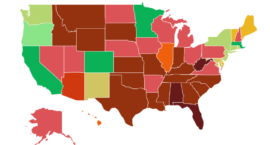
In 1864, Arizona—which was an official territory of the United States—was a vast desert. Women in Arizona could not vote, serve on juries or exercise full control over property in a marriage. They had no direct say in laws governing their bodies. Hispanic and African American women had even fewer rights than white women.
The Arizona Supreme Court ruled on April 9, 2024, that a 160-year-old abortion ban passed during this territorial period will go into effect. Since that ruling, the Arizona legislature has been grappling with how to handle the near-total ban. Even if the ban is fully repealed, it could still take temporary effect this summer.
As someone who teaches history in Arizona and researches slavery, I think it is useful to understand what life was like in Arizona when this abortion ban was in force.











